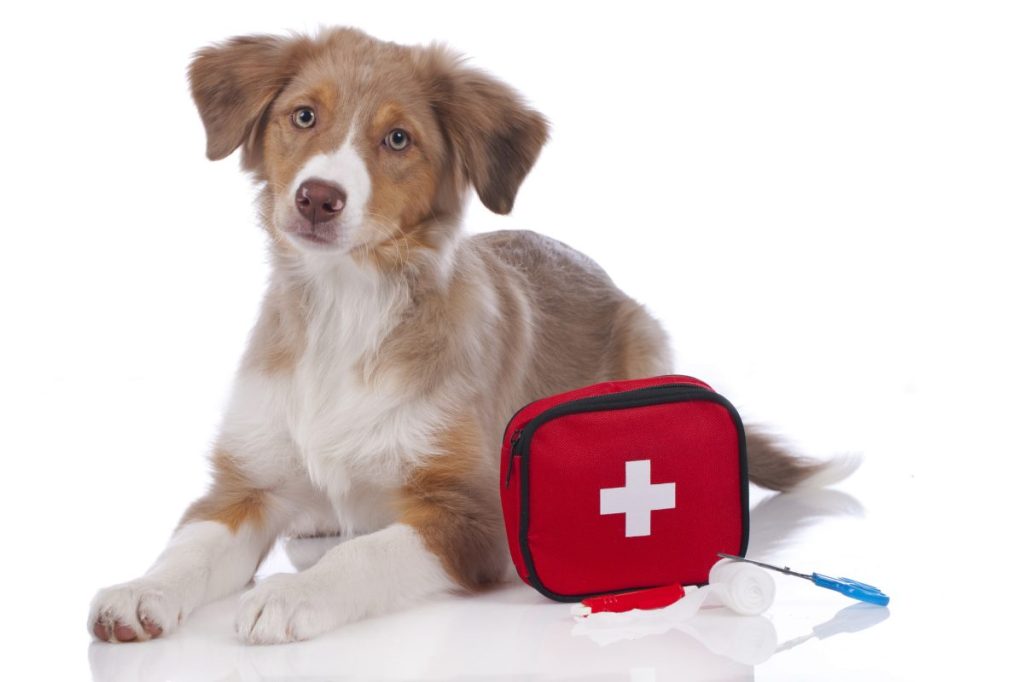As a responsible pet parent, ensuring the safety and well-being of your fur baby should always be a top priority. Just like humans, dogs can experience accidents and injuries, making it crucial to have a pet first-aid kit readily available. We’re going to break down everything you need in a first-aid kit for dogs.
Why you need a first-aid kit for your dog
Unexpected accidents can happen anytime, anywhere. Having a first-aid kit can make a significant difference in how well you respond to an emergency. By having one on hand, you can quickly provide immediate care to your dog before seeking professional veterinary assistance.
What to include in your first-aid kit
Essential contact information: Keep a list of phone numbers for your veterinarian, the nearest emergency veterinary clinic, and the Animal Poison Control Center hotline.
- Gauze and bandages: These are indispensable for wrapping wounds and controlling bleeding.
- Antiseptic wipes: Cleaning wounds is crucial to prevent infections.
- Scissors and tweezers: Handy tools for cutting bandages and removing debris from wounds.
- Adhesive tape: To secure bandages and splints in place.
- Styptic powder or pencil: Useful for stopping bleeding from minor cuts or torn nails.
- Muzzle or restraint: In case your dog becomes agitated or aggressive during treatment.
- Saline solution: For flushing out eye injuries or cleaning wounds.
- Instant cold pack: Helps reduce swelling and soothes sprains or strains.
- Tick remover: Essential for safely removing ticks.
- Diphenhydramine: This is an antihistamine with drying and sedative side effects (you probably know it as Benadryl®).
- Water and food supplies: Pack some treats and bottled water to keep your dog calm and nourished during emergencies.
How to use your first-aid kit
Here are a few tips to make your first-aid kit as effective and helpful as possible during an emergency:
Familiarize yourself with the contents: Know how to use each item effectively before an emergency arises.
Keep it easily accessible: Store the kit in a designated area where you can quickly grab it when needed.
Check and replenish regularly: Ensure your kit is up to date, and items with expiration dates are replaced as needed. Pay special attention to items that can dry out, like Band-Aids or medical tape.
Stay calm and composed: Your dog can sense your emotions, so remaining calm will help keep them relaxed during treatment.
Seek veterinary care: While a first-aid kit can address immediate issues, always consult your veterinarian for proper diagnosis and treatment after any significant incident.
Beyond a first-aid kit
Just having a kit with all the stuff in it is not enough. You need a guide to keep with the kit because, if you’re like most people, you may get pretty panicky in an emergency. The first aid instructions are as important as the kit itself, if not more so. To be really prepared, take the American Red Cross’s pet first aid class.
A first-aid kit is an indispensable tool for every dog owner. Being prepared for emergencies can save valuable time and potentially be a lifesaver for your beloved pet. Remember to regularly check and update the contents of your kit, stay informed about pet first-aid techniques, and, most importantly, seek professional veterinary care when necessary. By doing so, you can provide the best possible care for your canine companion and ensure their health and well-being.









